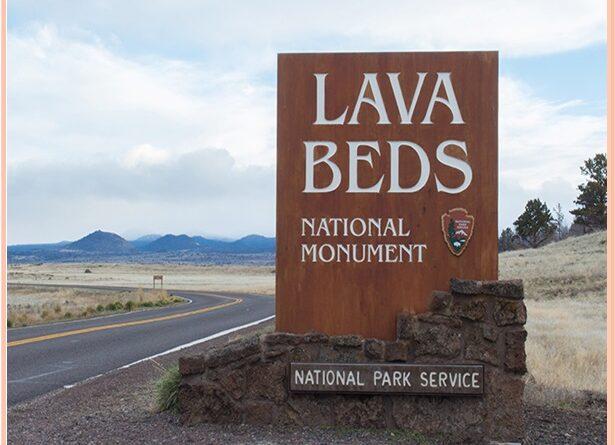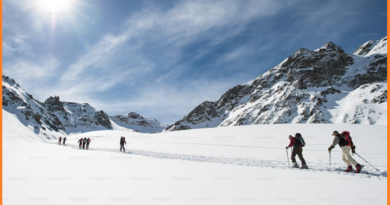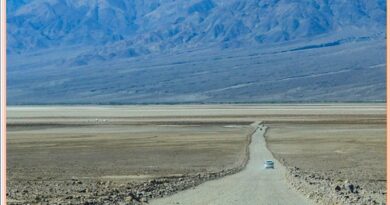Lava Beds National Monument of California-A great Volcanic wonderland
Lava Beds National Monument California
Lava Beds National Monument is located in Siskiyou and Modoc County in northeast California. The region in and around Lava Beds National Monument lies at the junction of the Sierra-Klamath, Cascade, and the Great Basin physiographic provinces, at the northeast edge of Medicine Lake Volcano. Lava Beds National Monument is known as being geologically significant because of its wide variety of volcanic formations, including lava tubes, fumaroles, cinder cones, spatter cones, pit craters, and hornitos, maars, lava flows, and volcanic fields. volcanic eruptions on the Medicine Lake shield volcano have created a vast rugged landscape punctuated by these many landforms. The monument was established as a national monument in November 1925 and includes more than 46,000 acres of area. See the Lava beds national monument cave maps.
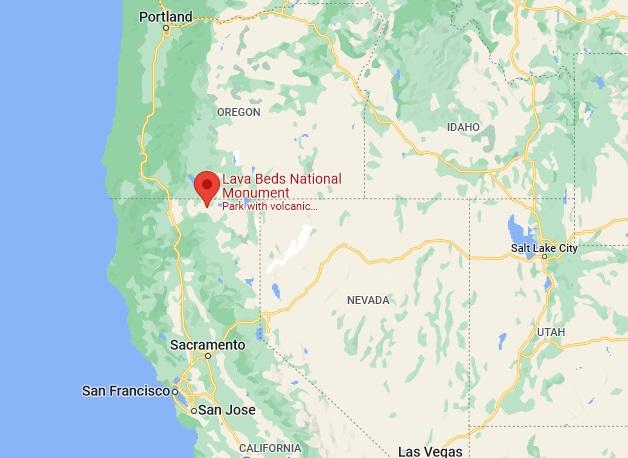
Lava Beds National Monument contains numerous lava tubes, 25 of which have marked entrances and established public access for trails and hiking. Over the last half-million years, volcanic eruptions on the Medicine Lake shield volcano have created a rugged landscape dotted with diverse volcanic features. More than 800 caves, Native American rock art, historic battlefields and campsites, and a high desert wilderness really amaze you.
Geology of the area
Lava Beds National Monument’s south edge flank the Medicine Lake volcano while The north edge coincides with Tule Lake, much of which is now reclaimed for farmland. South of the lake, the terrain rises from about 1,200 meters to about 1,600 meters. Most lava flows in the monument consist of cinder and spatters cones within the monument boundaries. These numerous flank vents of Medicine Lake volcano have fed mafic lava including basalt, basaltic andesite, and some andesite. The basalt of Mammoth Crater is the dominant unit in the monument in terms of area and volume and is host to most of the hundreds of lava-tube caves.
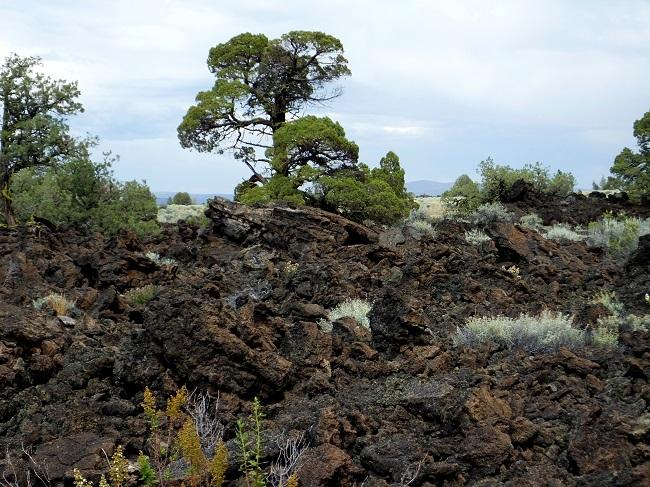
This unit erupted from several vents including Mammoth Crater and Modoc Crater, which is volumetrically one of the largest of Medicine Lake volcano, amounting to about 5 km. It covers an area of about 250 km2, extending as far as 25 km from Mammoth Crater, and was fed via approximately a dozen lava tubes. The basalt of Mammoth Crater was erupted in a geologically brief period of time, probably less than 100 years, as judged by the consistent paleomagnetic direction obtained from different parts of the unit.
Home doctor medicine for every household-click here
The basalt of Mammoth Crater interacted with the water of ancient Tule Lake and produced pillow lava between Captain Jacks Stronghold and the northeast corner of the monument. The pillows are visible in small quarries at the edge of the flow. The lake must have been very shallow, as it is today because the upper surface of the flow shows no effect of the interaction of water.
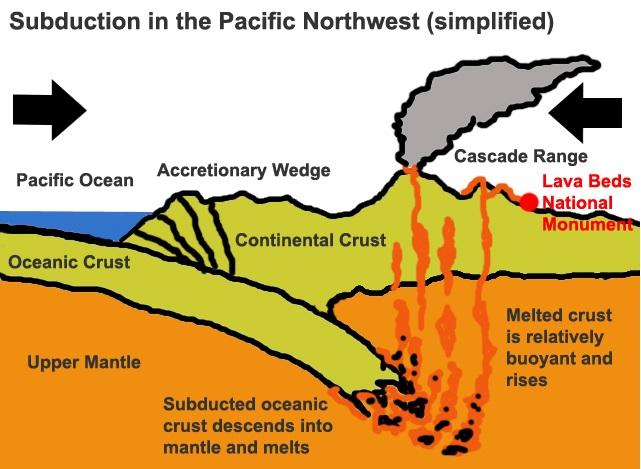
Lava Beds National Monument caves
Lava beds national monuments and surrounding landscape formed when flowing lava began to cool, forming tubes. When molten lava stopped flowing, hardened tubes were left behind. Though the scene can seem barren and desolate, but very interesting.
Also read- A Strange Phenomenon- ‘Avebury Stone Circle’ in the county of Wiltshire, England
Visitors require some equipment before entering the cave. bring a good headlamp or flashlight and a jacket for exploring the lava tubes. In summer, Siskiyou County daytime temperatures are around 100°F or more. But inside the lava tubes, it’s cool. Visitors may even find year-round ice, they can explore the tubes and mysterious formations on their own. It is also interesting to know how these caves were used as hideouts during the Modoc War in 1872–73, the only fight against Native Americans in California, in which Native Americans fought U.S. Army troops.
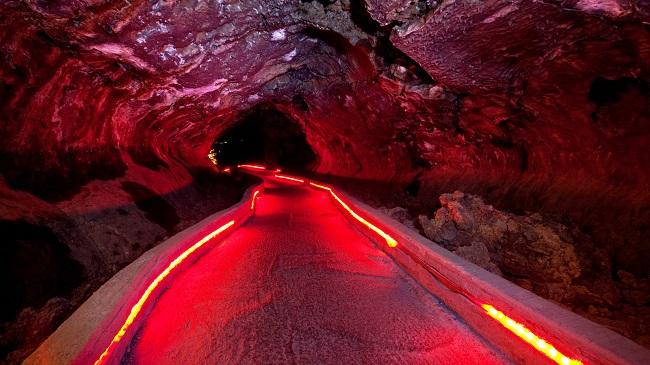
Nearly 25 tubes are open for exploring along Cave Loop Road, a two-mile road near the visitor center. Mushpot Cave, houses exhibits and is the only lighted cave at Lava Beds. Most of the park’s caves are rated for difficulty, and first-time explorers should start with the Hopkins Chocolate Cave (428 m.) or Blue Grotto Cave (470 m.). For the ultimate challenge, consider entering the remarkable Catacombs Cave, one of the park’s longest and most complex, with a total length of 2104 m.
Lose your weight with perfect shape-click here
Petroglyph point
The monument also includes Petroglyph Point, one of the largest panels of Native American rock art in the United States. The early people would paddle out in their boats to carve images into the soft rock. There is more Native American rock art here than anywhere else in California. Stop by the wonderful visitor center that provides lanterns, flashlights, and bump hats to explore the area.
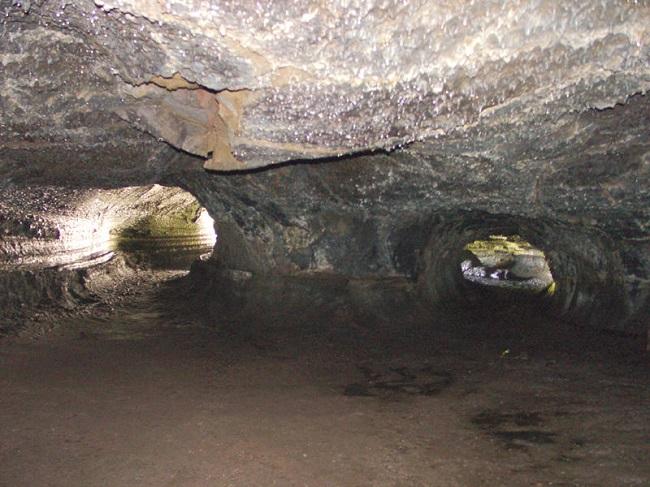
Lava beds national Monument trails
Hiking is the best experience in the historical sites of the Lava Beds National Monument, such as Captain Jack’s Stronghold and the Thomas-Wright Battlefield. 13 hiking trails are located within the lava beds national monument park. Most popular trails are short but lead to a number of historic sites to several geological areas within the Lava Beds Wilderness. Longer trails are more adventurous and will take you into designated wilderness areas. The view from the Schonchin Butte Fire Lookout is well worth the effort to hike up the steep 1.1 km trail. Some popular trail is Bunchgrass Trail (1.6 km), Missing Link Trail (1.1 km), Heppe Ice Cave (0.64 km), Big Nasty Trail (1.6 km), Schonchin Butte Trail (1.4 km), Symbol Bridge Trail (1.21 km), Gillem Bluff (1.1 km).
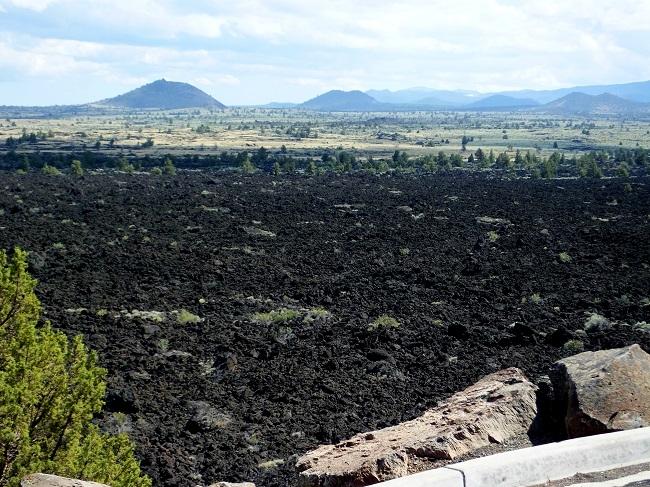
Flora and fauna
The lava tube collapse systems and lava outcrops support a great diversity of plant life, from an impressive variety of lichens and mosses to plants such as desert sweet, the aromatic purple desert sage, and yellow blazing star. An impressive variety of fern species are present in cave entrances including the spreading wood fern and the western sword fern. The fauna included in the Lava Beds National Monument area is Cooper’s hawk, fringed myotis, long-eared myotis, long-legged myotis, pallid bat, silver-haired bat, Townsend’s big-eared bat, western small-footed myotis, and American badger. The Dark rocks of the rugged lava flows are dotted with sagebrush, mountain mahogany, and Western junipers, creating a habitat for mule deer, pronghorn antelope, rabbits, and bird species, including bald eagles.
Sources-USGS.Gov, nps.gov,nationalpark.org, npca.org
